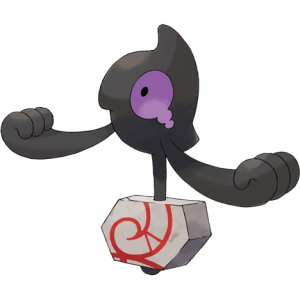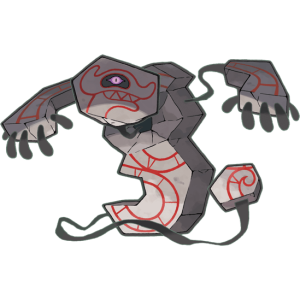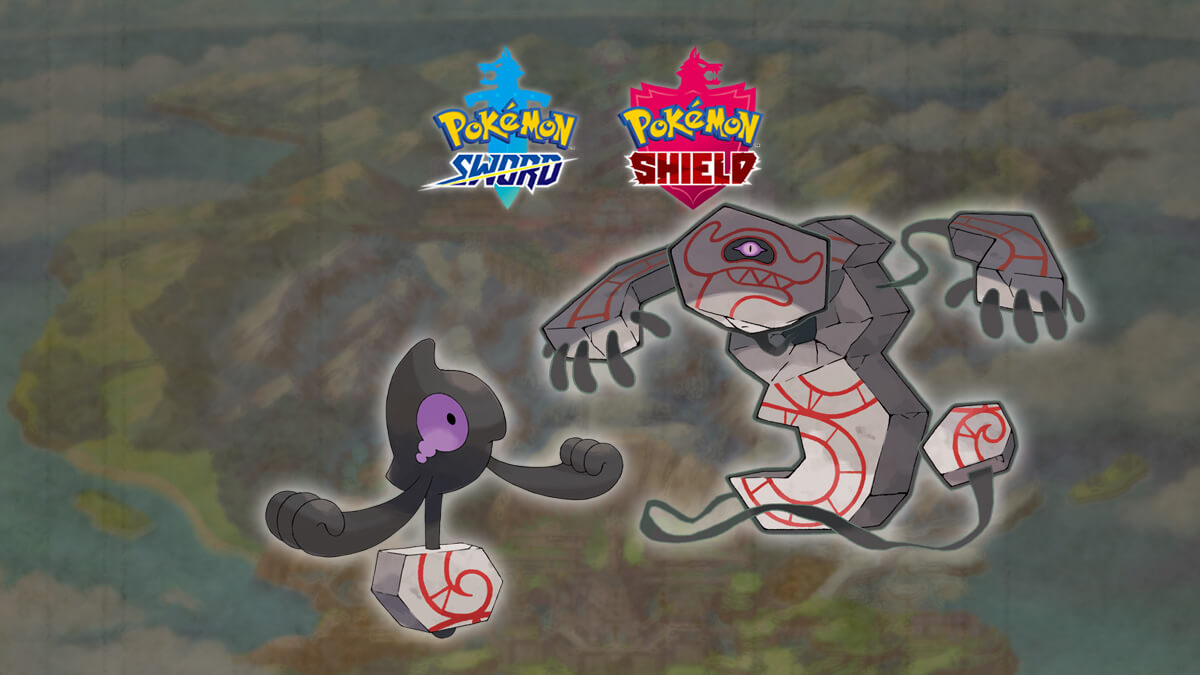In this recurring series, I’ll analyze the origins of Pokémon designs, their culture, and their historical allusions to British culture.
Galarian Yamask

Yamask was introduced in the fifth generation as a pure Ghost-type Pokémon. Its name was a combination of Yama, a Hindu and Buddhist deity of death, and “mask”.
In Galar, it has received a regional variant. Its eyes have gone from red to a dull purple while its distinctive mask has been replaced by a painted stone. In addition to being Ghost-type, this variant has a Ground typing.
Galarian Yamask seems to be based on runestones, painted inscriptions on rocks that were done by Vikings in the Scandinavia region. The inscriptions were written in runes, a series of Germanic alphabets that were used before the Latin characters gained popularity in Europe.
Many of these runestones were placed near graves of fallen Vikings and served as a way to memorialize them. As was written in an old Viking poem,
For men of consequence a mound should be raised to their memory, and for all other warriors who had been distinguished for manhood a standing stone, a custom that remained long after Odin’s time.
Ynglinga saga
It might also be that Galarian Yamask has some inspiration from the Norwegian deildegast, a ghost connected to boundary stones that served a similar purpose to fences today. If a person moved their boundary stones to try enlarging their own territory, they would be cursed after dying to roam the earth until they could move their stones back. However, as ghosts cannot interact with the world, they would be stuck forever.
A clay slab with cursed engravings took possession of a Yamask. The slab is said to be absorbing the Yamask’s dark power.
It’s said that this Pokémon was formed when an ancient clay tablet was drawn to a vengeful spirit.
While many of the runestones were originally made from tough stones like bedrock, a layer of clay is often used by historians as a way to preserve these stones by killing lichen and algae which would otherwise grow.
Galarian Yamask seems to be a spirit that was raised and bound to the rune, although the Pokédex does not provide context on how this clay slab came to be cursed.
Runerigus

Galarian Yamask will evolve into Runerigus once it goes through a very specific set of circumstances. It needs to take 49 points of damage from an opponent without fainting and then you must travel under the arch in the Dusty Bowl in Galar.
It is the Grudge Pokémon, a Ground and Ghost-type. Its name is a combination of “rune” and “egregious”.
Galarian Yamask had just the tail end of the rune. Runerigus has gathered the rest of the segments and connected them through ghostly wisps. This allows parts of the completed rune to break off into smaller segments while then being able to recombine as needed.
This design is inspired by the Ingvar runestones, a set of famous runestones that memorialize the Viking expedition led by Ingvar the Far-Travelled to the Caspian Sea. This expedition took place around the time of the Ringerike style, when serpents or dragons were depicted on the runestones. The runic characters would be written along the body.
A powerful curse was woven into an ancient painting. After absorbing the spirit of a Yamask, the painting began to move.
Never touch its shadowlike body, or you’ll be shown the horrific memories behind the picture carved into it.
The Pokédex description makes mention of its signature ability Wandering Spirit. When it is hit by a contact move, the spirit swaps with the target. Then Runerigus gets the target’s ability while the target gets the ability Wandering Spirit.
The evolution method may be a reference to the Bardo, a Buddhist concept of purgatory between death and rebirth. This state exists for 49 days at most. The Dusty Bowl may be the location of the remaining runestone fragments, where Yamask completes its purgatory and then is reborn as Runerigus.
Conclusion
Yamask is the only Pokémon originally introduced in the fifth generation with a branched evolution. Its evolutionary line was based on coffins that memorialized Egyptian figures. In a more west European setting, it continues this association to memorials.
Vikings, who used runestones to recognize fallen heroes, serve as the design inspiration for Galarian Yamask and Runerigus, although there are many burial rituals throughout historical cultures, and a Yamask regional variant may be inspired by any of them.
Are you a fan of the new Galarian-take on the Yamask line? Or do you wish it had been reimagined in a different way?
Leave your thoughts in the comments below or share them on Discord!

